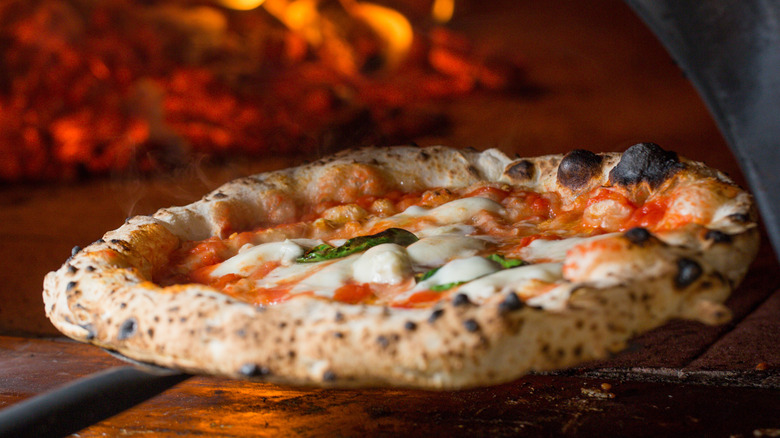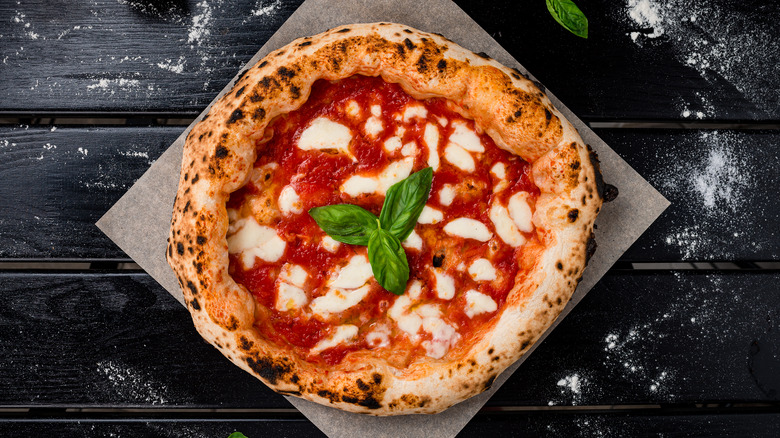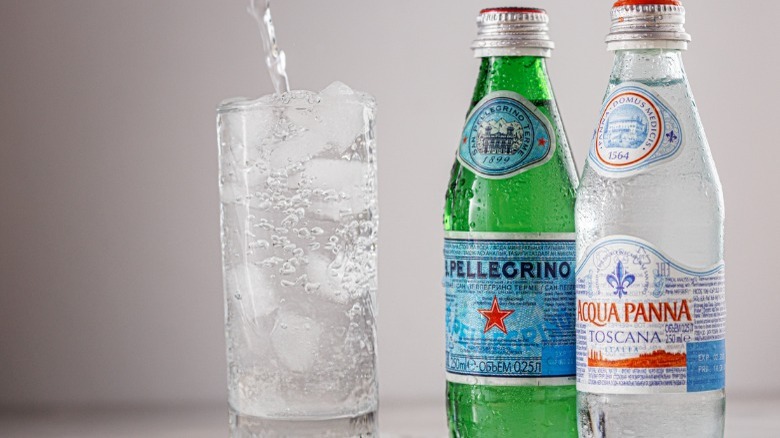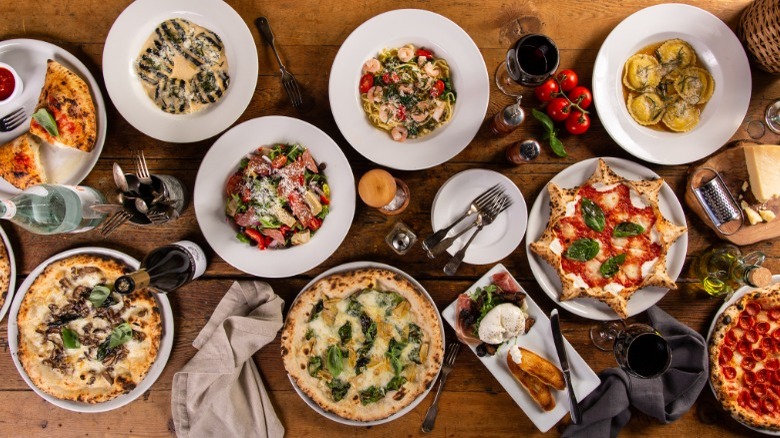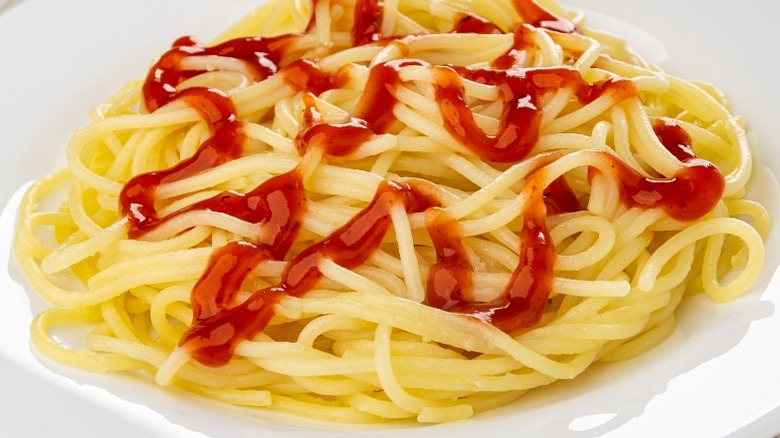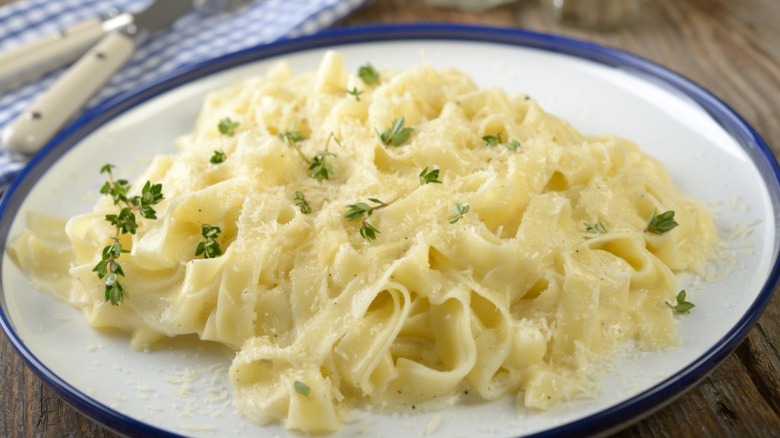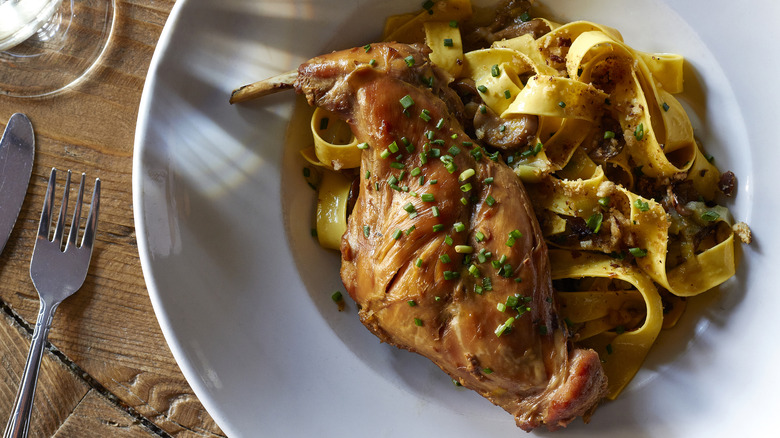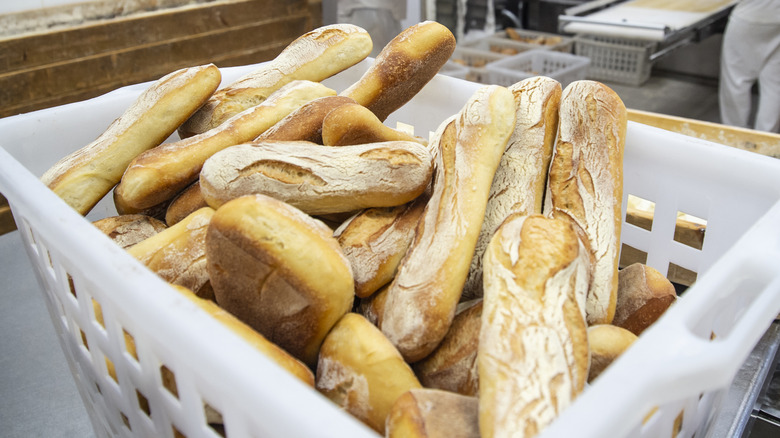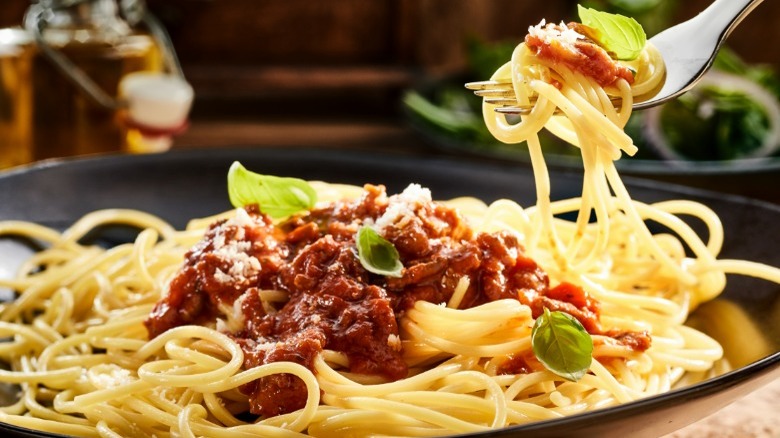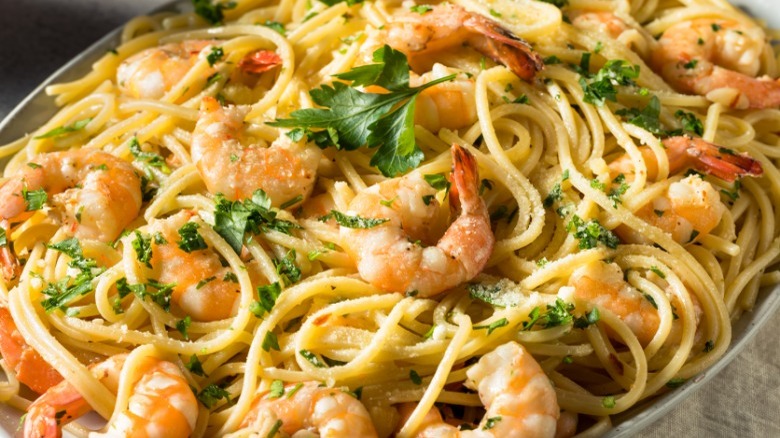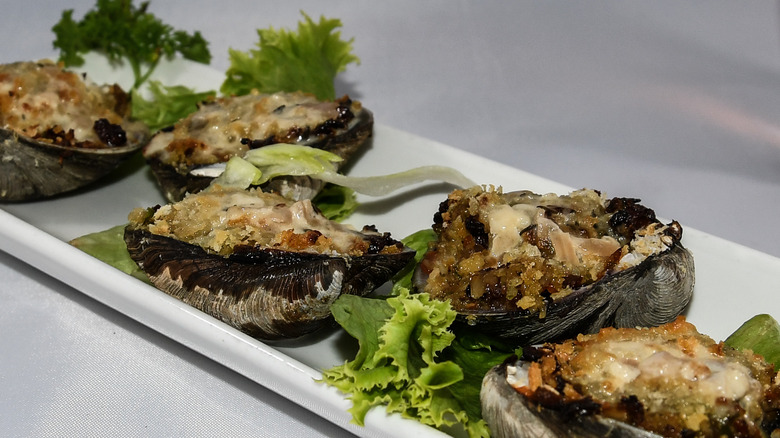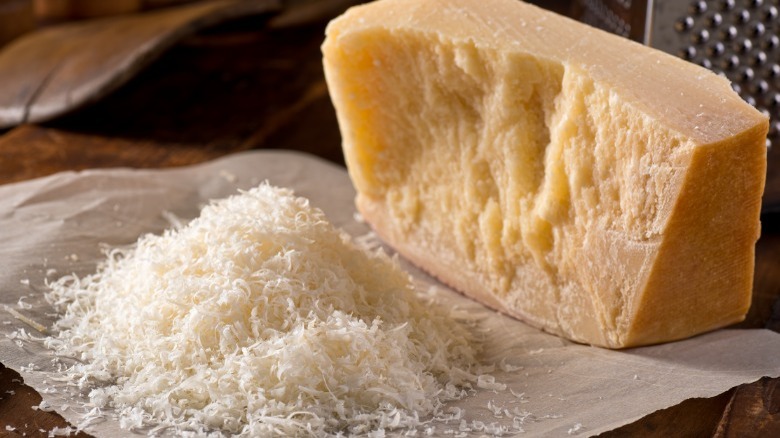12 Things You Should Stop Doing At An Italian Restaurant
Italian cuisine is beloved worldwide, and even if you're just splitting a pizza with your best friend, each bite should be savored. And while ordering a tomato pie at a neighborhood pizzeria isn't that complicated, chefs and foodies discourage their fans from doing the same at authentic Italian restaurants. They also know what should be ordered, the proper ways to eat Italian food, and how to make the most of these dining experiences.
One restaurant in Hell's Kitchen, Sesamo, says that Italians have traveled the globe since ancient times, spreading their culture and cooking styles to other countries. Italian restaurants in this country can be quite Americanized, but plenty stick to their roots. These dining establishments take their food very seriously, just like their cousins in the homeland. Travel blog Never Ending Voyage says that Italy's food culture can be strict, with designated courses and unspoken etiquette rules.
The first thing to know about eating in Italy is that the dinner hour there generally starts around 8 p.m., so have a late lunch or a few snacks to tide your over. These other recommendations are about staying as authentic as possible and avoiding what some call ... food crimes.
Eating pizza with your hands — or not?
According to food blog Chef Travel Guide, pizza is highly respected in Italy and eaten with forks and knives. The pizza there tends to be thin in the middle, so eating with one's hands can be awkward. And besides that, blazing hot pizza can burn fingers and mouths. Here's the other side: The National Post argues that sharing pizza bonds people together and that the food should be easy to eat. They appreciate the texture, arguing that messiness is part of the fun. We agree because nothing beats biting into a folded-over slice.
What about sharing pizza? This too is a travesty, according to some. In Italy, pizzas are served whole at sit-down restaurants and are not shared. Diners use forks and knives, finishing pizzas down to the last bite; it's a source of pride. Slices are sold at cafes and some restaurants, though.
After considering these opinions, we feel it's fine to hand-eat pizza in casual Italian restaurants, but only in certain situations because it can be messy. So if you're splitting a pie and a pitcher with your buddies, avoid forks and knives because they will laugh at you. But if you're on a first date, business lunch, or another formal meal, wait to see what other people do and make your decision. With pizza, it all depends on the circumstances.
Ordering the wrong things to drink
Author Ann Reavis' travel blog Tuscan Traveler says that homes and fine restaurants in Italy only serve two drinks with lunch and dinner: water and wine. Your server might look at you strangely if you ask for beer or cocktails. And instead of a pitcher or tap water, most restaurants in Italy offer a choice of uncarbonated or fizzy mineral water (via Never Ending Voyage), and these will be brought to your table in bottles. Travel blog The Italian Concierge points out that Italians don't drink tap water in restaurants, though the quality is fine. Italians will have soft drinks and beer with pizza, though.
A trip to Italy won't be complete if you fail to sample the wines; this is one of the things that they are known for. But what kind to pair with your entrees? Cucina Venti recommends ordering cab sauv, pinot noir, or chianti with tomato-based sauces, and Sangiovese for bolder ones. Moving onto white wines, they like pinot grigio, riesling, or chardonnay with creamy and oil-based sauces. And if you're not sure, just ask your server for recommendations. But don't ask for tea or coffee to be served with your main course, because Italians request it after dessert. That's right — if you're sticking to the rules, you'll have to enjoy that cannoli with water or wine.
Ordering solo
Family-style Italian restaurants like the chain Maggiano's Little Italy serve up family-sized portions for customers to share. And while many Italian eateries don't offer these options, if you see them on the menu, you should take advantage of them. The family-owned L'Amore Italian Restaurant in Phoenix, Arizona, says that this style of eating is a staple of Italian dining, with the food served on large plates for everyone at the table to share. Family-style dining presents more opportunities for conversation and trying different dishes, plus you get a larger variety of foods to eat. It's best to let each person order at least one thing from a family-style menu to keep everyone happy.
Back in medieval times, family-style meals might not have prioritized etiquette, but fortunately, we have evolved. (Most) people recognize the importance of not reaching across the table to grab the best platter first. Feel free to reach for the platter closest to you, take a portion, and pass it to the right. Advanced Etiquette posts that some groups may wait until the host has been served to begin eating, and some feel that everyone should be served before anyone digs in. We disagree because no one likes to eat cold food. But wait until everyone has taken food from or passed on all the platters before asking for seconds.
Not understanding the different courses
Foodwise, we know that you're probably used to ordering an appetizer, main course, and dessert when dining out. Travel blog See Italy claims that authentic Italian restaurants can have seven courses and won't usually have side dishes on the same plates as entrees. Don't feel pressured, because you don't need to order something from every single course. Do yourself a favor and read the entire menu before ordering anything; you might want to select an antipasti, a pasta dish, and a dessert, or another combination.
But what about those seven courses? The Cucina Toscana in Salt Lake City, Utah, describes them in detail, and the first is the aperitivo. This is basically to whet your appetite, and there can be wine, cheese, nuts, and olives — small dishes that come second to the drink. Next is antipasti, the real appetizer course. There might be a charcuterie platter, bruschetta, and other cold and hot choices. Primi is served third and usually includes fancy hot pasta dishes and soup — the first large course of the meal. The fourth course, secondi, is where you'll see the meats, shellfish, and poultry; contorni, served alongside secondi, comprises vegetable-based dishes. Some menu contorni sections also have salad, but if they don't, the restaurant may serve these after the secondi.
Still hungry? The formaggi e frutta course features seasonal and regional fruits and cheeses; dolci is for sweet desserts like tiramisu and gelato. After that, you can have caffe and digestivo (grappa, limoncello, or another alcoholic drink).
Asking for ketchup
Sure, it's made with tomatoes, but if you ask for ketchup for your pasta at an Italian restaurant, your server might give you a dirty look. It's great with a hamburger and fries, but these are not found on these kinds of menus. Even if your kids demand ketchup for their pasta, just smile and tell them that they can have oil or butter. Requesting ketchup in restaurants is like committing a sin if you do it in Italy. Don't even ask for it with a pizza if you know what's good for you.
YouGov conducted an international survey about food crimes committed against Italian food, and pouring ketchup onto pasta made the list. Those respondents clearly understand that ketchup is not the same thing as tomato sauce, and so should you. Feel free to sprinkle on the parmesan, unless it's a fish dish. That's another sin that will be explained shortly.
Ordering fettuccini Alfredo
Creamy pasta dishes are front and center on American Italian restaurant menus like Olive Garden — but needless to say, Olive Garden doesn't exactly qualify as "authentic." According to food blog Devour, fettuccine Alfredo (named after its creator, Alfredo di Lelio) is not a traditional or popular dish in Italy. Restaurants in the U.S. tend to drench the long noodles with heavy sauces and too much cheese. In Italy, the versions are much lighter with an emphasis on simplicity, made with just butter and Parmesan. The original was invented in Rome in 1908. He made it for his wife, and they liked it so much that they added it to their own restaurant's menu.
Even though the fettucini Alfredo's popularity soared around the world, you probably won't see it when you're in Italy. Culture Trip categorizes it as a non-Italian dish and claims that only two restaurants in Rome, which both claim to have invented it, serve it. And it's not the only so-called Italian dish served at American Italian restaurants. The Foodellers posts that chicken carbonara and chicken parm don't come from Italy, either.
Not ordering braised foods
Many Italian restaurants offer braised meats, and if you've never tried these kinds of entrees, you have been missing out. Braised foods are roasted at low temperatures in covered vessels for lengthier times than with other cooking methods. The meat can be seared first and cooking liquid added to create a savory, rich flavor. You'll see braising used with tougher cuts of raw meat, but the results melt in your mouth. The keys to braising are using low heat, inspired sauces, and being patient while the meat cooks.
Short ribs do well with braising and are often seen on Italian restaurant menus. Sauce Magazine praised the braised short rib at Noto Italian Restaurant, in St. Peters, Missouri, braised with a honey-garlic sauce and fruit. This substantial dish is served with polenta, and the sauce is sweet and sticky, reminiscent of red wine. Via Verdi restaurant in Miami serves up a braised veal osso buco that's coated in flour, seared over high heat, and cooked with (homemade) chicken broth and vegetables on low heat in an oven. Braised dishes tend to be filling, so if you're with a friend, why not order two primi pasta dishes and share a braised secondi?
You're doing bread all wrong
You've just arrived at an Italian restaurant and a basket filled with hot, fresh bread is brought to the table. Do you ask for butter and start digging in? No.
In Italy, bread is not eaten before meals, according to Italy food blogger Elizabeth Minchilli — remember, the first courses are always smaller, lighter plates not intended to fill you up. Even if it's on the table before any of the courses are served, you are supposed to wait until the other food is brought out. Yes, this can be hard, and servers probably won't hold it against you. And if the bread isn't already on the table, don't ask about it. In some cases, Italian restaurants will bring out bruschetta or focaccia as an antipasti, and since that's hot, you can go for it. Just don't eat it with your pasta, because combining the two starches is frowned upon for the most part. You can use it to mop up extra pasta sauce too. Otherwise, just eat the bread with non-pasta courses like meats and vegetables.
In Italy, bread is seen as a complement to other foods and not something to fill up on. That's why you're not supposed to eat it with olive oil, or vinegar. You'll see this in American Italian restaurants, but not in the country itself. Those restaurants feel that filling up on bread before the other courses is wrong.
Eating pasta like you have no clue
Share the Pasta showcases a lengthy, alphabetical-order list of Italian pasta, with everything from acini di pepi to ziti. And while many are long and thin, others are short and tubular, small and round, or wavy ... the list goes on. When eating Italian pasta dishes, don't pull out your knife and fork and start cutting away. And don't scoop it up from the plate with a spoon and eat it like soup. The blog Hardcore Italians emphasize that spaghetti should not be cut into pieces because, after all, it is not a steak. They claim that true Italians pick up a few strands with a fork and twirl them against the side of the plate or bowl without a spoon. Leaving a few dangling ends on the fork is expected and accepted; just slurp them up.
Artisan pasta maker Pasta Evangelists agrees with the no-spoon rule, adding that children in Italy grow up learning the fork-twirling technique. Spoons can only be used to eat pasta when it is in soup. So if you order penne or other small pasta, just use a fork. Only using a fork to eat pasta shows respect for Italian culture and food, so even if you think using a spoon is neater and more polite, fuhgeddaboudit.
Ordering seafood the wrong way
Those specials that waiters rattle off from memory at Italian restaurants might be fine, but be extra careful when the dishes feature seafood. According to Insider, some restaurants use nightly specials to use up leftover ingredients in their kitchens. To see if that is likely, compare the produce that comes with the fish specials to the rest of the menu. If it's all the same, the restaurant may be trying to use up older ingredients.
If a fish special at an Italian restaurant looks good, check to see if it's wild-caught and sustainable; farm-raised is generally healthier and tastier. Tripsavvy says that grilled (whole or filleted) fish dishes are common in Italy and don't come covered in heavy sauces. Shrimp is often served with the heads on in Italy, but they tend to be more flavorful. Italian restaurants are also big on clams, mussels, and octopus. Don't be shy about asking your server where the seafood is from and when it was caught — if it's high-quality, they will be happy to let you know.
Ordering Americanized or basic meals
Strip steaks and clams casino might seem like choice selections at Italian restaurants, but you might have seen one too many mobster movies. The truth is, the owners put these Americanized dishes on menus to keep picky clientele happy. New York is one of the best places in the world to get pizza, but even the locals know not to order it in authentic Italian restaurants: New York Street Food doesn't list that or basic pasta like spaghetti and meatballs amongst the best things to try at legitimate Italian eateries.
So rather than going for the usual, start with antipasti di mare, which features a variety of fresh fish. And instead of linguini or fettucini, pick a homemade risotto or gnocchi for the pasta course. This source likes fresh fish for secondo, but remember to keep an eye out for braised meats. And try to order things you haven't tried before, like bottarga (Meditteranean caviar), baccalà (cod), or canederli (dumplings made with pork belly). Authentic Italian restaurants often have homemade gelato on their menus, which pairs well with zabaione and semifreddo. The Travel recommends arancini, crispy fried rice balls that are filled with meats or cheeses — this is served in antipasti courses; if you are ordering pizza, get these as a starter course.
Don't add parmesan to seafood pasta
It's hard to say no when a waiter stops at your table to offer freshly grated parmesan cheese, but this is a no-no if you are eating seafood in an Italian restaurant. There's some history to this rule, as explained by Meal and a Spiel. Way back when back in Italy, seafood and cheese could not be sourced in the same locations; in this case, cows grazing in Italian grasslands versus fish swimming in the seas of southern Italy. Because of the distance, the ingredients would lose their freshness after traveling so long. This is probably why restaurants in Italy don't normally serve veal or chicken parm either, though logistics are no longer an issue.
Any kind of cheese can detract from the taste of freshly prepared seafood, even if it tastes good. In Italy, overpowering the delicate flavors of seafood with dairy can also be considered a dining crime. See Italy adds that chefs in Italy might even take it personally when patrons ask for extra cheese in these cases. Your server might offer you some with a bolognese sauce, but not for a seafood dish — if no cheese is offered there is a reason, so keep quiet about that and order cheese as an aperitivo.
